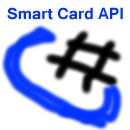History of Smart Cards
Milestones in the development of smart card technology:
1970 – Dr. Kunitaka Arimura of Japan filed the first and only patent on the smart card concept.
1974 – Roland Moreno of France filed the original patent for the IC card, later dubbed the “smart card”.
1977 – Three commercial manufacturers, Bull CP8, SGS Thomson, and Schlumberger began developing the IC card.
1979 – Motorola developed the first secure single chip microcontroller for use in French banking.
1982 – Field testing of serial memory phone cards took place in France – the world’s first major IC card test.
1984 – Field trials of ATM bank cards with chips were successfully conducted.
1986 – 14,000 cards equipped with the Bull CP8 were distributed to clients of the Bank of Virginia and the Maryland National Bank. 50,000 Casio cards were distributed to clients of First National Palm Beach Bank and the Mall Bank.
1987 – First large-scale smart card application implemented in the United States with the U.S. Department of Agriculture’s nationwide Peanut Marketing Card.
1987- smart-card-based drivers license in Turkey
1991 – First Electronic Benefits Transfer (EBT) smart card project launched for the Wyoming Special Supplemental Nutrition Program for Women, Infants, and Children (WIC).
1992 – A nationwide prepaid (electronic purse) card project (DANMONT) was started in Denmark.
1993 – Field test of multi-function smart card applications in Rennes, France, where the Telecarte function (for public phones) was enabled in a Smart Bank Card.
1994 – Europay, MasterCard, and Visa (EMV) published joint specifications for global microchip-based bank cards (smart cards).
Germany began issuance of 80 million serial memory chip cards as citizen health cards.
1995 – Over 3 million digital mobile phone subscribers worldwide begin initiating and billing calls with smart cards.
The first of 40,000 multi-functional, multi-technology MARC cards with chips were issued to U.S. Marines in Hawaii.
1996 – Over 1.5 million VISACash stored value cards were issued at the Atlanta Olympics.
MasterCard and Visa began sponsorship of competing consortia to work on solving the problems of smart card interoperability. Two different card solutions were developed: the JavaCard backed by Visa, and the Multi-application Operating System (MULTOS) backed by MasterCard.
1998 – The U.S. Government’s General Services Administration and the United States Navy joined forces and implemented a nine-application smart card system and card management solution at the Smart Card Technology Center in Washington, D.C. The Technology Center’s primary purpose is to demonstrate and evaluate the integration of multi-application smart cards with other types of technology, showcasing systems available for use in the Federal Government.
Microsoft announced its new Windows smart card operating system.
France began piloting a smart health card for its 50 million citizens.
1999 – Smart Access Common ID Project. Federal agencies to acquire a standard, interoperable employee identification card. The U.S. Government (General Services Administration) starts true multi-application Java card pilot in the Washington, D.C. metropolitan area.
2001 – Global Platform Specification 2.1
2001 – Independent smart card expertise available from smart card expert Jacquinot Consulting, Inc.
2002 – Estonia citizen smart card
2005 – EMV compliant cards introduced in Malaysia
2006 – contactless payment system infrastructure in the U.S.
2009 – Belgium and Spain eID identification cards
2012 – Millions of PIV and CAC cards deployed in the U.S.
2014 – 3.4 billion EMV cards in circulation worldwide; U.S. introduces EMV cards
- Easy-to-use chip card integration with .NET library
with C# and VB.NET sample code for Mifare, DESFire EV1, JavaCard, KVK, eGK, SIM, PIV, CAC, HID Prox, iCLASS, SEOS and many more

